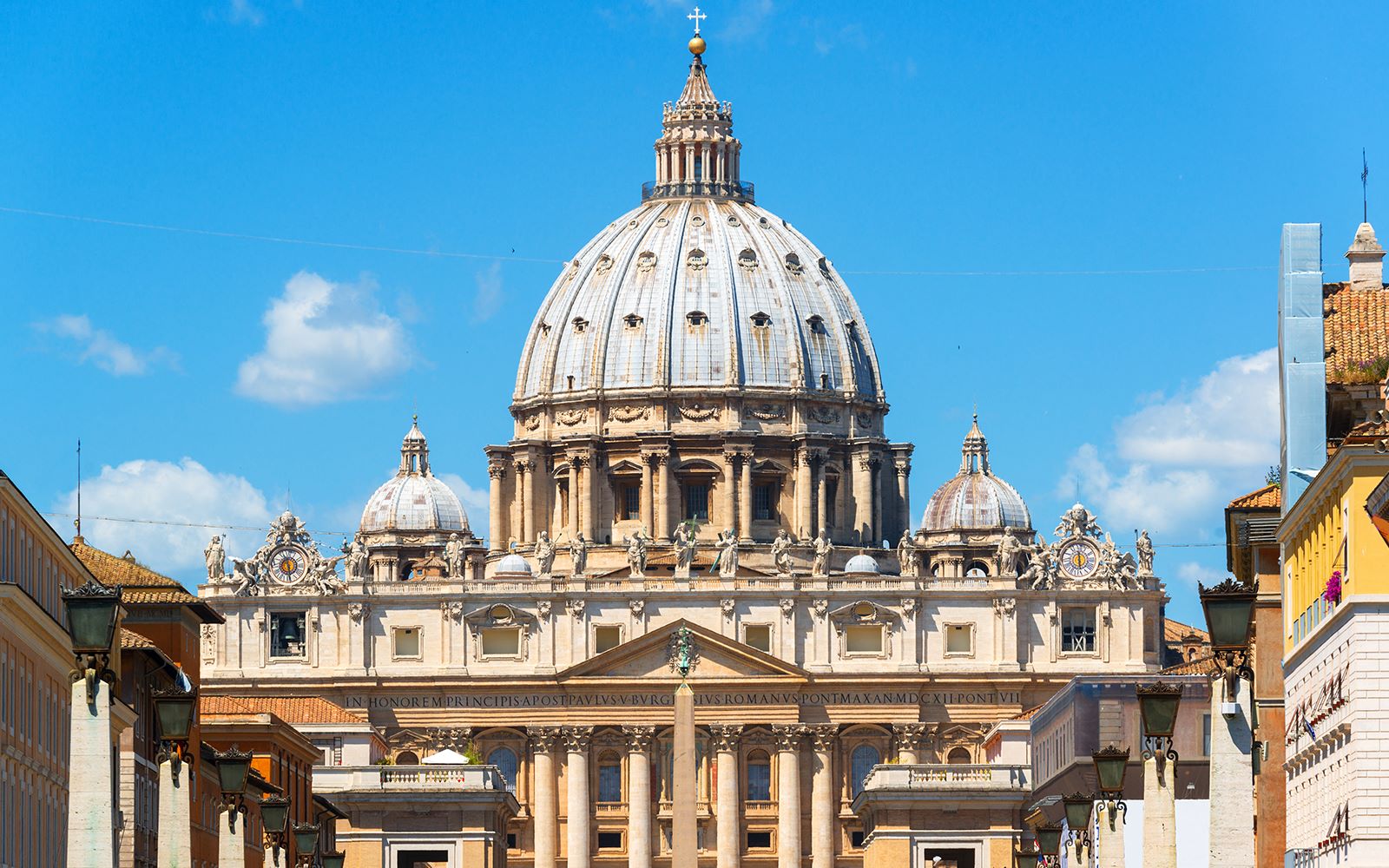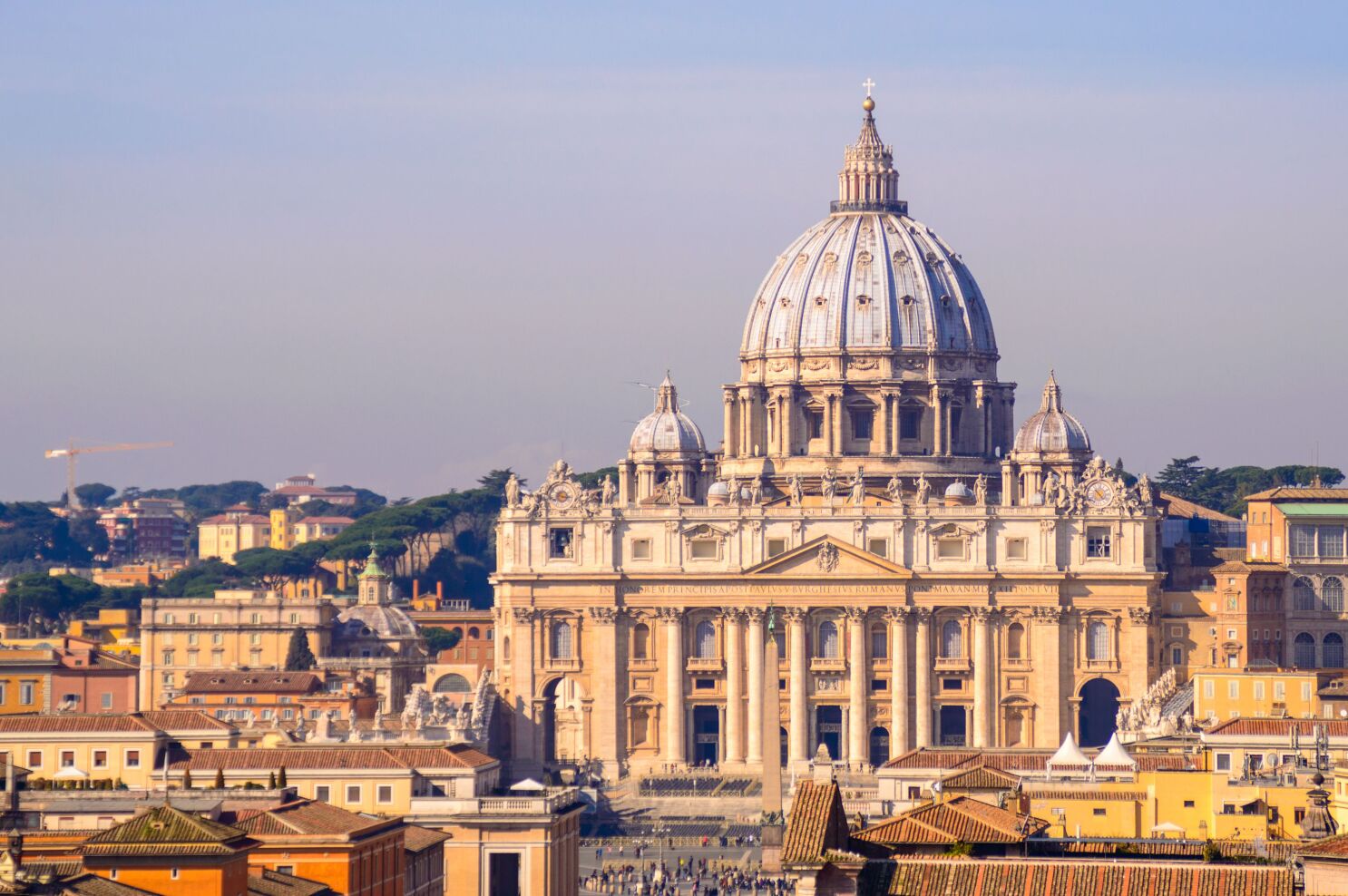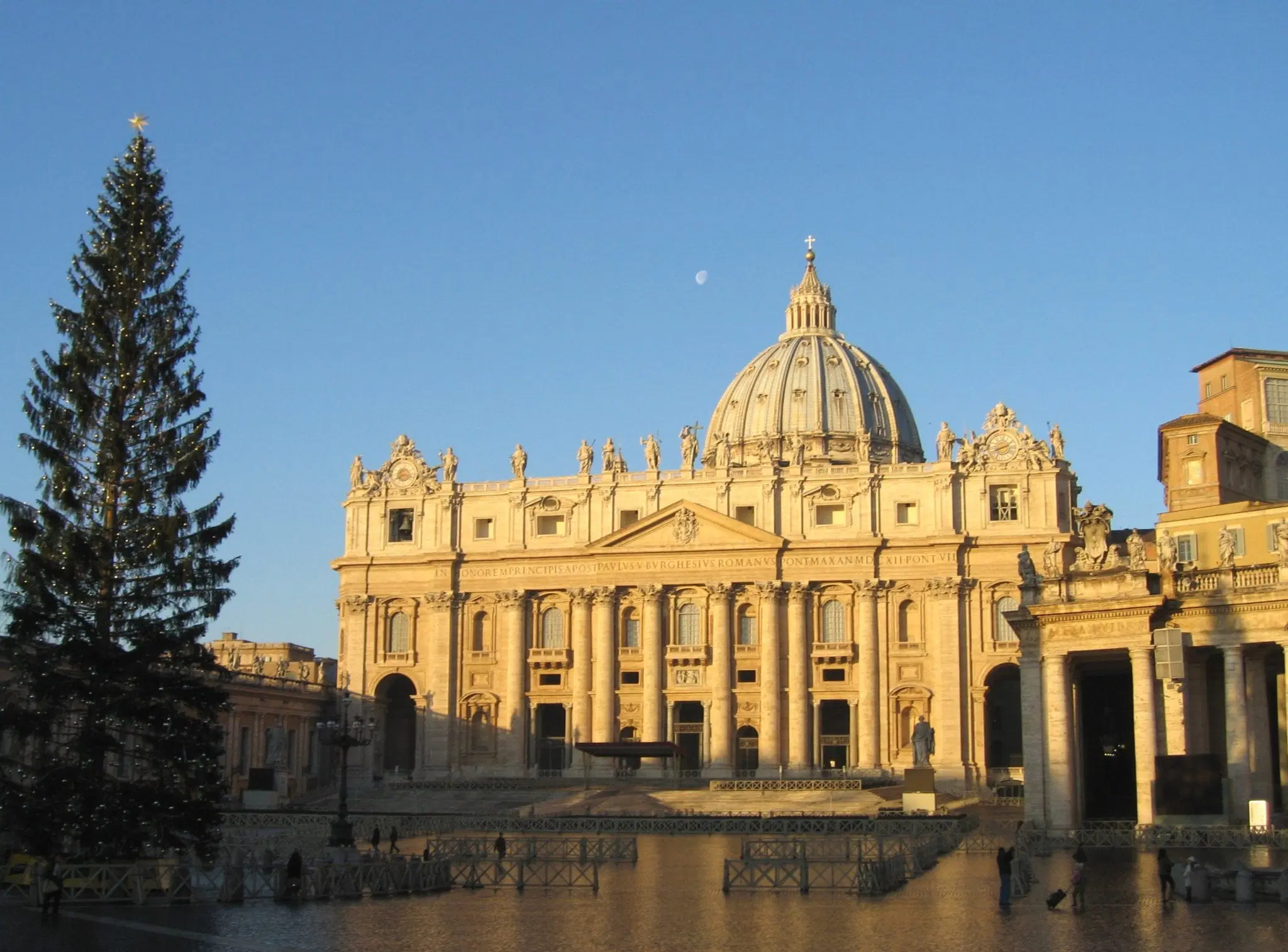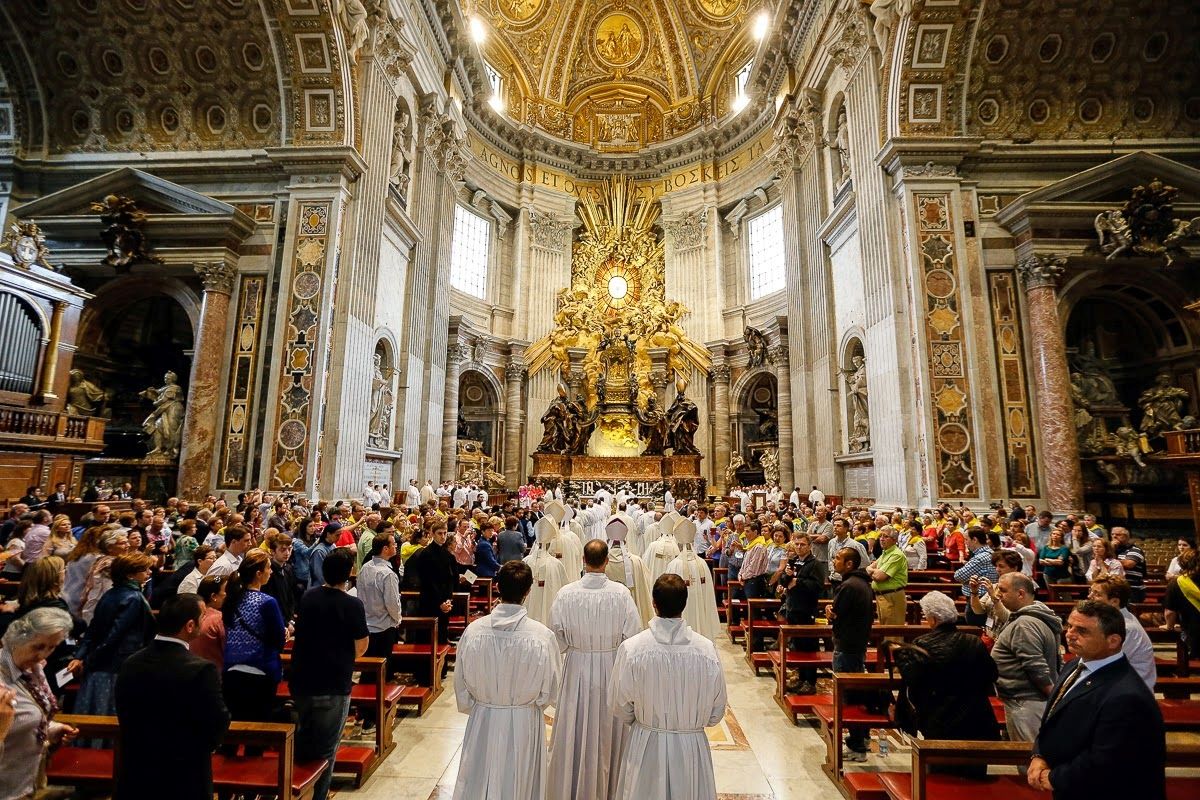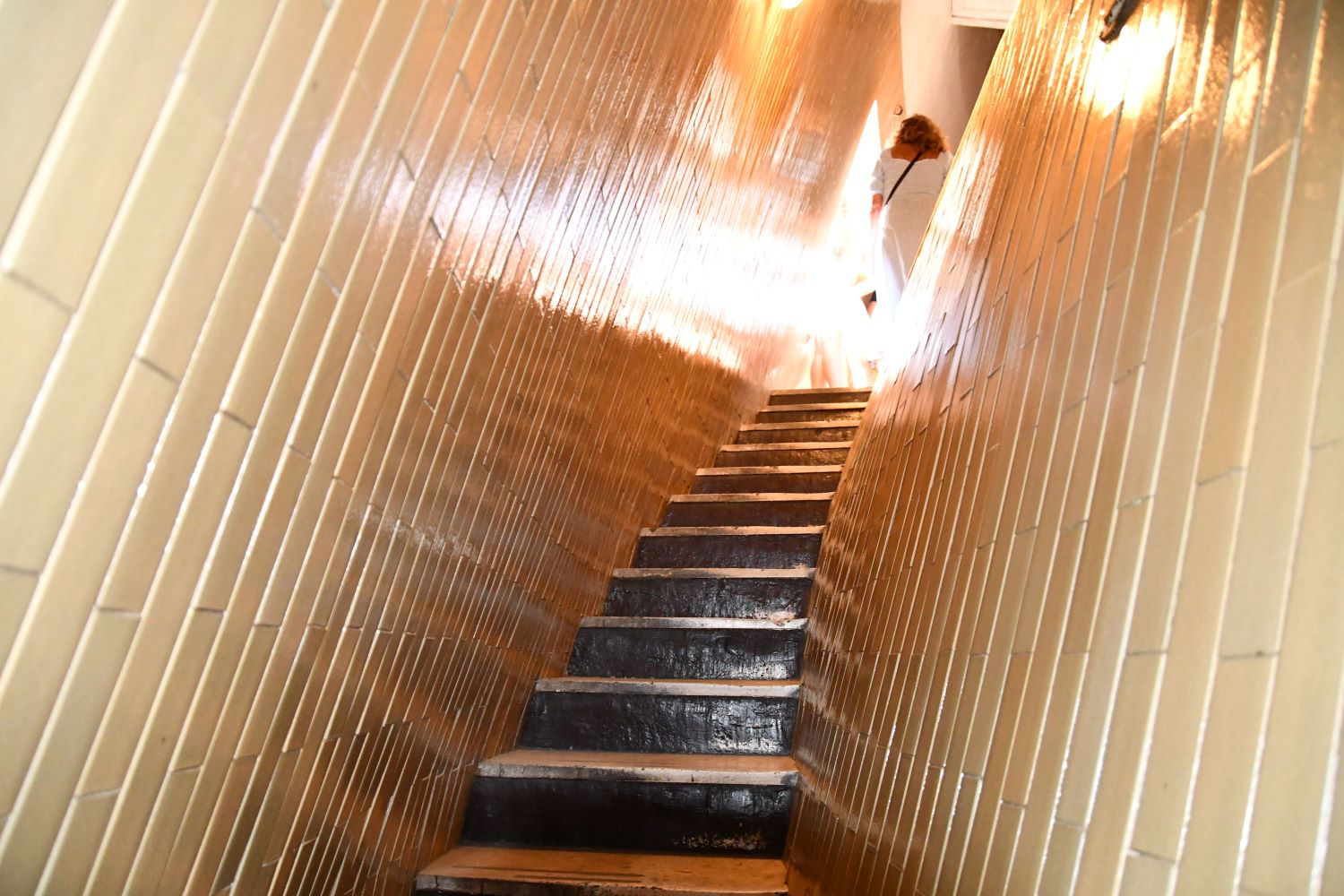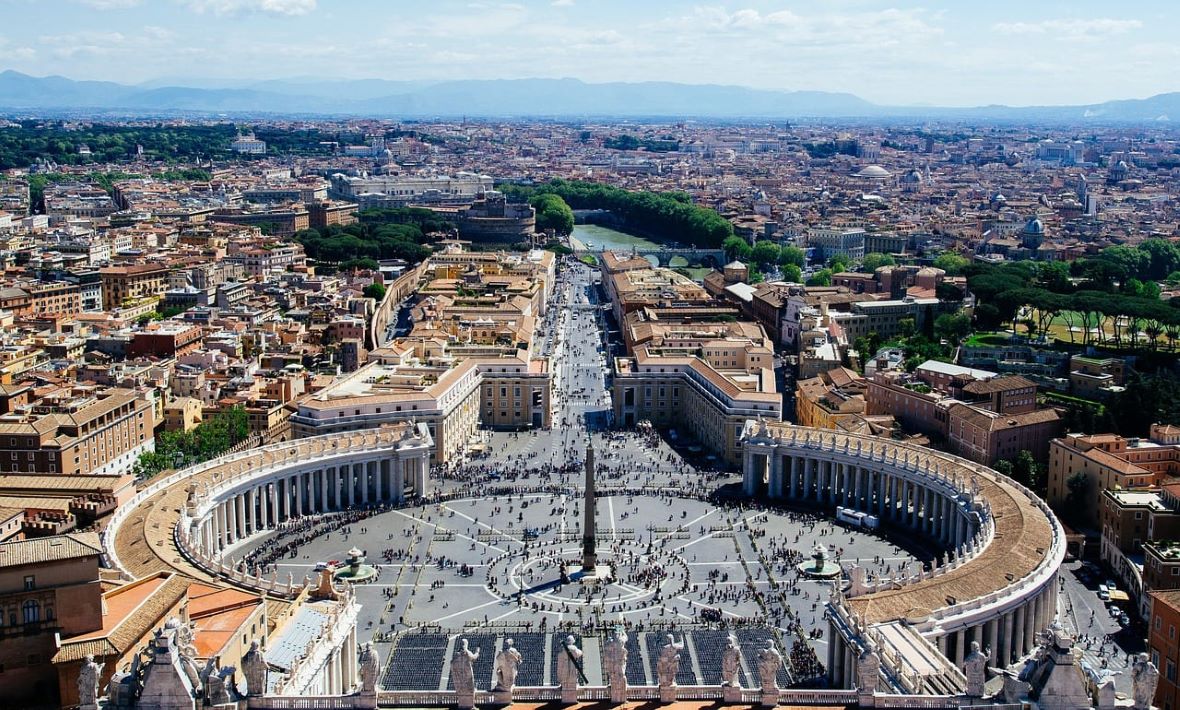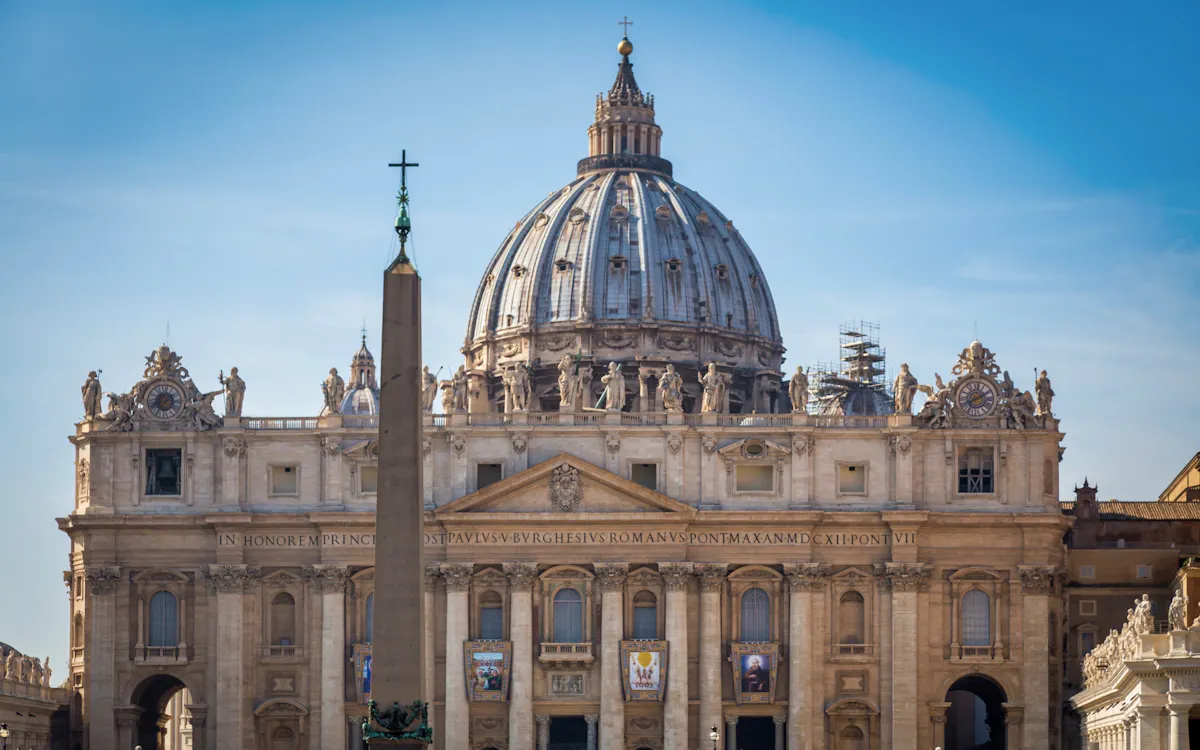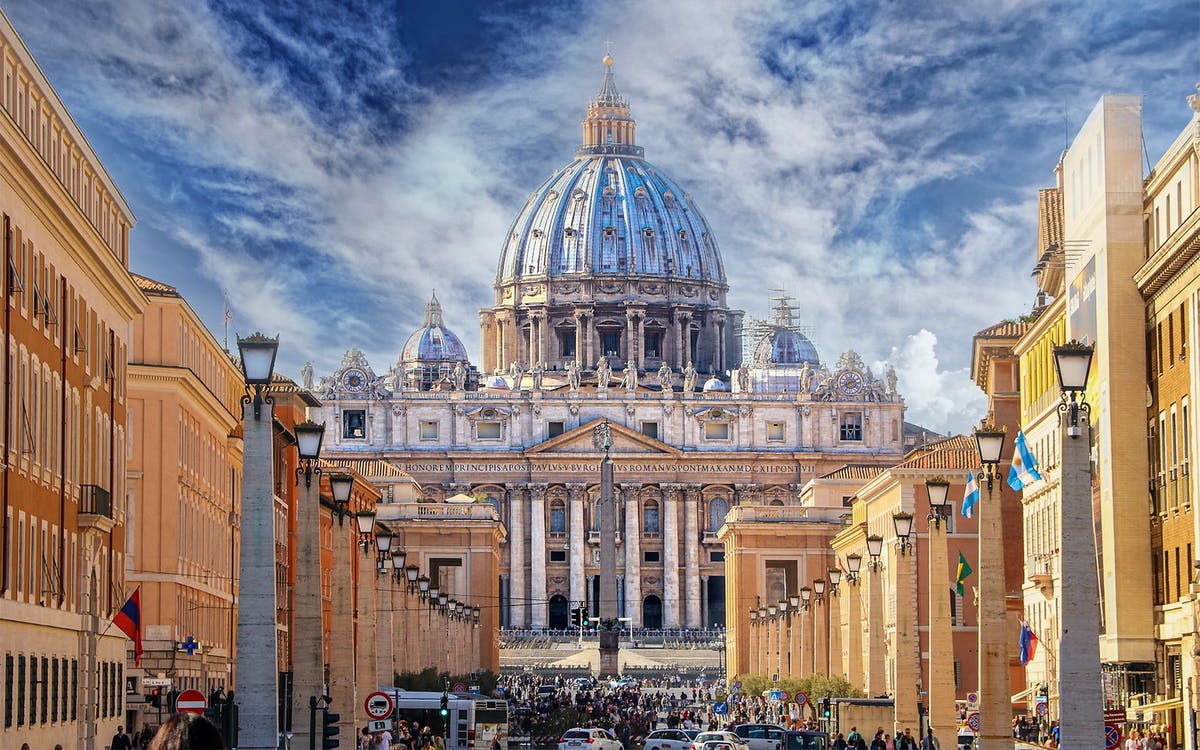Home>Arts and Culture>How Was The Location Of Saint Peter’s Basilica Selected
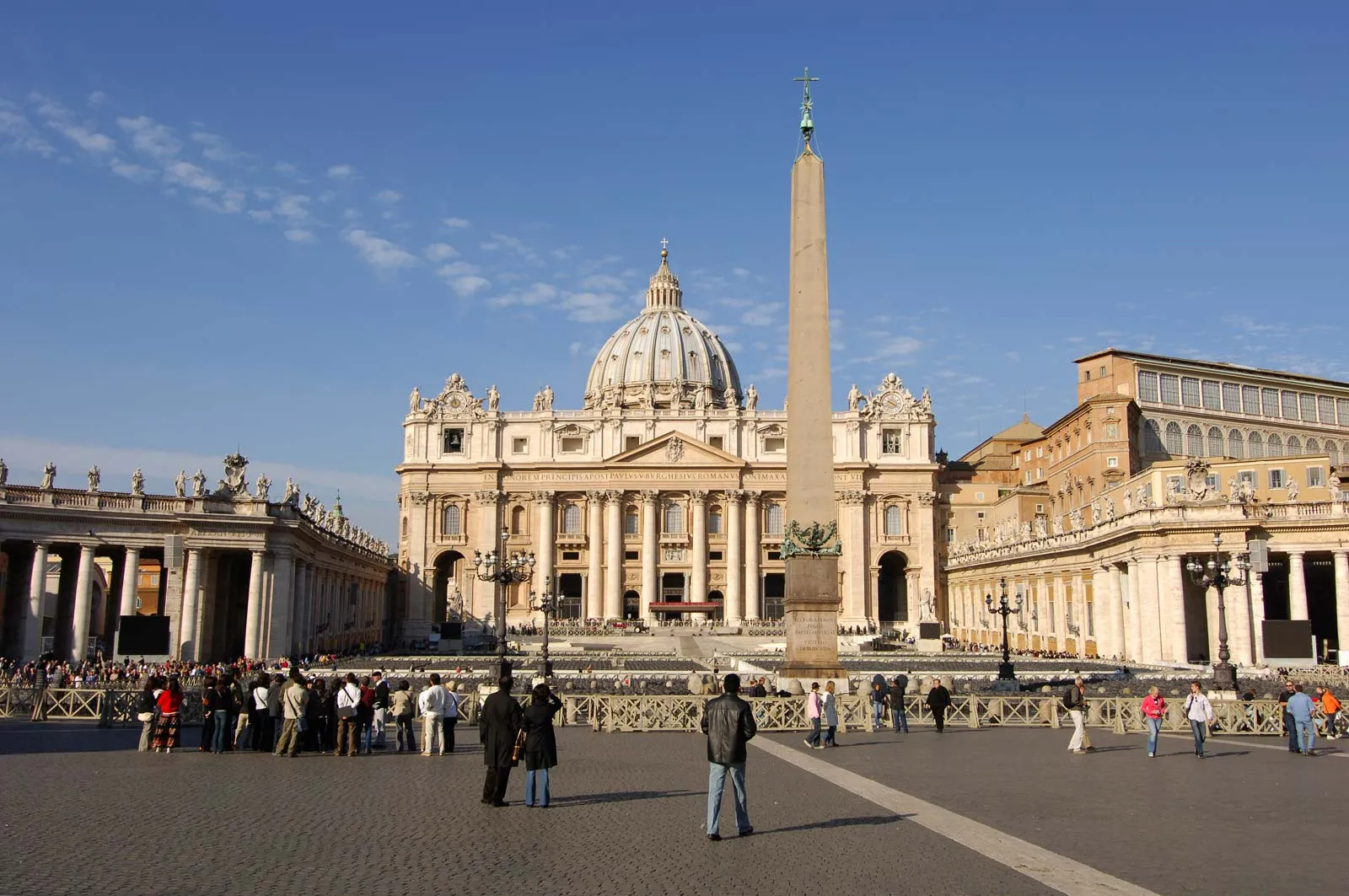

Arts and Culture
How Was The Location Of Saint Peter’s Basilica Selected
Published: February 10, 2024
Ericka Andersen, an editor at Christian.net, expertly merges digital strategy with content creation, focusing on faith and societal issues. Her communication skills enhance the platform's engaging narratives, fostering meaningful dialogue on belief's impact on society.
Discover the fascinating history behind the selection of the location for Saint Peter's Basilica and its significance in arts and culture. Explore the intriguing process and influences that shaped this iconic architectural masterpiece.
(Many of the links in this article redirect to a specific reviewed product. Your purchase of these products through affiliate links helps to generate commission for Christian.net, at no extra cost. Learn more)
Table of Contents
Introduction
The selection of a location for a monumental structure like Saint Peter's Basilica is a fascinating journey through history, culture, and religious significance. The process of choosing the site for this iconic basilica involved a myriad of factors, including historical context, religious symbolism, and practical considerations. Understanding the intricacies of how the location was chosen provides a deeper appreciation for the rich tapestry of influences that shaped this architectural masterpiece. In this article, we will delve into the historical background of Saint Peter's Basilica, explore the factors considered in selecting its location, and unravel the profound influence of the Vatican Hill and Emperor Constantine in this momentous decision. Join us on this captivating exploration of the origins of Saint Peter's Basilica and the remarkable story behind the selection of its location.
Read more: Where Is Saint Peter’s Basilica
Historical background of Saint Peter's Basilica
Saint Peter's Basilica stands as a testament to centuries of religious and architectural history, with its origins rooted in the early days of Christianity. The basilica's namesake, Saint Peter, was one of the twelve apostles of Jesus and is revered as the first Bishop of Rome. According to tradition, Saint Peter was martyred in Rome and buried on Vatican Hill, the site where the basilica now stands.
The original structure, known as Old Saint Peter's Basilica, was constructed in the 4th century during the reign of Emperor Constantine. This early basilica served as a focal point for Christian worship and pilgrimage, drawing believers from across the Roman Empire to pay homage to the apostle Peter. The significance of this sacred site continued to grow, leading to the decision to build a new and grander basilica in the 16th century.
The commission for the new basilica was given to renowned architects and artists of the time, including Donato Bramante, Michelangelo, and Gian Lorenzo Bernini. Their collective vision was to create a monumental structure that would not only honor the apostle Peter but also serve as a symbol of the grandeur and influence of the Catholic Church.
The construction of the new Saint Peter's Basilica spanned over a century, with various popes and architects contributing to its design and execution. The result was a breathtaking fusion of Renaissance and Baroque architectural styles, culminating in a structure that exuded magnificence and spiritual significance.
The historical background of Saint Peter's Basilica is a tapestry woven with the threads of faith, artistry, and the enduring legacy of Christianity. Its evolution from a humble shrine to the grandeur of the present-day basilica reflects the enduring power of religious devotion and the timeless allure of architectural marvels. Understanding this rich historical context provides a profound appreciation for the significance of the basilica and the enduring legacy it represents.
Factors considered in selecting the location
The selection of a location for a monumental structure like Saint Peter's Basilica involved a meticulous evaluation of various factors, each playing a crucial role in determining the site's suitability. These considerations encompassed historical, religious, and practical aspects, ultimately shaping the basilica's profound significance and enduring impact.
-
Religious Significance: The site of Saint Peter's Basilica holds immense religious importance, as it is believed to be the final resting place of Saint Peter, one of the most revered figures in Christianity. The decision to build the basilica on Vatican Hill, where Saint Peter was purportedly buried, was a deliberate affirmation of the apostle's legacy and the spiritual foundation of the Catholic Church. This sacred association imbued the location with profound symbolism, elevating it to a place of pilgrimage and veneration for countless believers.
-
Historical Context: The historical context of the location played a pivotal role in its selection. Vatican Hill, where the basilica stands, was already a site of religious significance in ancient Rome, predating the Christian era. Its association with the Roman god of boundaries, Terminus, and its position as a revered burial ground further contributed to its status as a place of spiritual and cultural importance. The decision to situate Saint Peter's Basilica on this historically significant hill underscored the continuity of sacred space and the integration of Christian tradition with the broader historical tapestry of Rome.
-
Practical Considerations: Beyond its religious and historical significance, the location of Vatican Hill offered practical advantages for the construction and visibility of the basilica. Its elevated position provided a commanding presence within the cityscape, ensuring that the grandeur of the basilica would be visible from various vantage points across Rome. Additionally, the expansive area surrounding Vatican Hill allowed for the construction of a monumental structure befitting the aspirations of the Catholic Church, providing ample space for the basilica and its accompanying piazza.
-
Symbolic Center of the Church: The selection of the location also aimed to establish Vatican Hill as the symbolic center of the Catholic Church. By situating the basilica at this prominent site, the Church sought to assert its spiritual and temporal authority, aligning the physical presence of the basilica with its overarching influence. This deliberate positioning reinforced the basilica's role as a focal point for the faithful and a testament to the enduring legacy of the papacy.
The convergence of these factors underscores the profound deliberation and significance attached to the selection of Saint Peter's Basilica's location. By considering the interplay of religious, historical, and practical elements, the site was chosen not only for its physical attributes but also for its enduring symbolism and spiritual resonance. This thoughtful selection process laid the foundation for the basilica's enduring legacy as a beacon of faith and a testament to the enduring power of human aspiration and devotion.
Influence of the Vatican Hill
The Vatican Hill, known in Latin as Mons Vaticanus, exerted a profound influence on the selection of the location for Saint Peter's Basilica, shaping the basilica's significance and enduring legacy. Situated on the west bank of the Tiber River, Vatican Hill holds a rich tapestry of historical, religious, and cultural associations that rendered it an unparalleled site for the construction of this iconic structure.
At the heart of the Vatican Hill's influence lies its deep-rooted religious significance. Even before the advent of Christianity, this elevated terrain held sacred connotations in ancient Rome. It was revered as the site of the Roman god of boundaries, Terminus, symbolizing the demarcation and sanctity of space. This preexisting religious reverence laid a foundational backdrop for the integration of Christian tradition, as the hill transitioned from a pagan sacred site to a cornerstone of Christian veneration.
The pivotal factor that elevated the Vatican Hill to unparalleled prominence was its association with Saint Peter, one of the foremost figures in Christian history. According to tradition, Saint Peter, the apostle chosen by Jesus to lead his church, was martyred in Rome and buried on Vatican Hill. This sacred association transformed the hill into a hallowed pilgrimage site, drawing countless believers seeking solace and spiritual connection with the apostle. The decision to situate Saint Peter's Basilica on this revered ground was a deliberate affirmation of the apostle's enduring legacy and the foundational role he played in shaping the Christian faith.
Furthermore, the Vatican Hill's elevated position within the cityscape of Rome offered practical advantages for the visibility and grandeur of the basilica. Its commanding presence allowed the basilica to stand as a beacon of faith, visible from various vantage points across the city. This strategic positioning ensured that the basilica would not only serve as a place of worship but also as a visual testament to the enduring influence of the Catholic Church.
The Vatican Hill's influence extended beyond its physical attributes, transcending into the realm of symbolism and cultural resonance. By establishing the basilica on this historic terrain, the Church sought to solidify the hill as the symbolic center of its spiritual and temporal authority. This deliberate alignment of the basilica with the Vatican Hill underscored the enduring legacy of the papacy and the unbroken continuity of sacred space, seamlessly integrating Christian tradition with the broader historical narrative of Rome.
In essence, the influence of the Vatican Hill on the selection of Saint Peter's Basilica's location transcends mere physical geography. It embodies a convergence of religious, historical, and cultural significance, weaving a narrative that spans millennia and resonates with the enduring power of faith and human aspiration. The basilica's symbiotic relationship with the Vatican Hill stands as a testament to the seamless integration of tradition, reverence, and architectural magnificence, perpetuating its legacy as a timeless symbol of spiritual devotion and cultural heritage.
Role of Emperor Constantine in the selection process
Emperor Constantine, a pivotal figure in the history of Christianity and the Roman Empire, played a profound role in the selection process of the location for Saint Peter's Basilica. His influence reverberated through the centuries, shaping the trajectory of the basilica's construction and solidifying its enduring significance.
Constantine's reign marked a transformative period for Christianity, as he became the first Roman emperor to embrace the faith. His conversion to Christianity not only altered the religious landscape of the empire but also set in motion a series of events that would leave an indelible mark on the history of Saint Peter's Basilica.
One of Constantine's most notable contributions to the basilica's history was the construction of the original Old Saint Peter's Basilica on Vatican Hill. This early basilica, commissioned by Constantine in the 4th century, served as a monumental testament to the growing influence of Christianity within the Roman Empire. By choosing Vatican Hill as the site for this sacred structure, Constantine elevated the prominence of the location, laying the groundwork for its enduring association with the apostle Peter and the Christian faith.
Constantine's patronage of Christianity and his support for the construction of Old Saint Peter's Basilica established a precedent that would resonate throughout the centuries. His actions not only affirmed the significance of Vatican Hill as a place of Christian veneration but also set the stage for the future development of the basilica as a symbol of the Church's authority and spiritual legacy.
Furthermore, Constantine's vision for the basilica's location extended beyond religious considerations. As a shrewd statesman, he recognized the strategic importance of situating the basilica on Vatican Hill, ensuring its visibility and prominence within the city of Rome. This deliberate positioning aligned with Constantine's broader efforts to solidify Christianity's place within the empire, utilizing monumental structures like Old Saint Peter's Basilica to underscore the faith's growing influence.
In essence, Emperor Constantine's pivotal role in the selection process of Saint Peter's Basilica's location cannot be overstated. His patronage of Christianity, coupled with his strategic vision for the basilica's site, laid the foundation for the enduring significance of Vatican Hill and the basilica itself. Constantine's legacy as a champion of Christianity and his influence on the basilica's location endure as a testament to the enduring interplay of faith, power, and historical resonance.
Read more: How Big Is The St. Peter’s Basilica
Conclusion
In conclusion, the selection of the location for Saint Peter's Basilica stands as a testament to the interplay of historical, religious, and practical considerations that shaped this iconic structure. The enduring significance of the basilica's site on Vatican Hill is deeply rooted in its profound religious symbolism, historical resonance, and strategic positioning within the city of Rome.
The historical background of Saint Peter's Basilica, from its humble origins as Old Saint Peter's Basilica to the grandeur of the present-day structure, reflects the enduring legacy of Christianity and the timeless allure of architectural marvels. The evolution of the basilica underscores the enduring power of religious devotion and the enduring impact of monumental structures on the cultural landscape.
The factors considered in selecting the location of Saint Peter's Basilica encompassed religious significance, historical context, and practical advantages. The deliberate affirmation of the apostle Peter's legacy and the integration of Christian tradition with the broader historical tapestry of Rome underscored the profound deliberation and significance attached to the basilica's location. This thoughtful selection process laid the foundation for the basilica's enduring legacy as a beacon of faith and a testament to the enduring power of human aspiration and devotion.
The influence of the Vatican Hill on the selection of Saint Peter's Basilica's location transcends mere physical geography. It embodies a convergence of religious, historical, and cultural significance, weaving a narrative that spans millennia and resonates with the enduring power of faith and human aspiration. The basilica's symbiotic relationship with the Vatican Hill stands as a testament to the seamless integration of tradition, reverence, and architectural magnificence, perpetuating its legacy as a timeless symbol of spiritual devotion and cultural heritage.
Emperor Constantine's pivotal role in the selection process of Saint Peter's Basilica's location cannot be overstated. His patronage of Christianity, coupled with his strategic vision for the basilica's site, laid the foundation for the enduring significance of Vatican Hill and the basilica itself. Constantine's legacy as a champion of Christianity and his influence on the basilica's location endure as a testament to the enduring interplay of faith, power, and historical resonance.
In essence, the selection of Saint Peter's Basilica's location is a tapestry woven with the threads of faith, history, and human ingenuity. It stands as a testament to the enduring power of monumental architecture to transcend time and inspire awe, serving as a beacon of faith and a testament to the enduring legacy of human aspiration and devotion.
